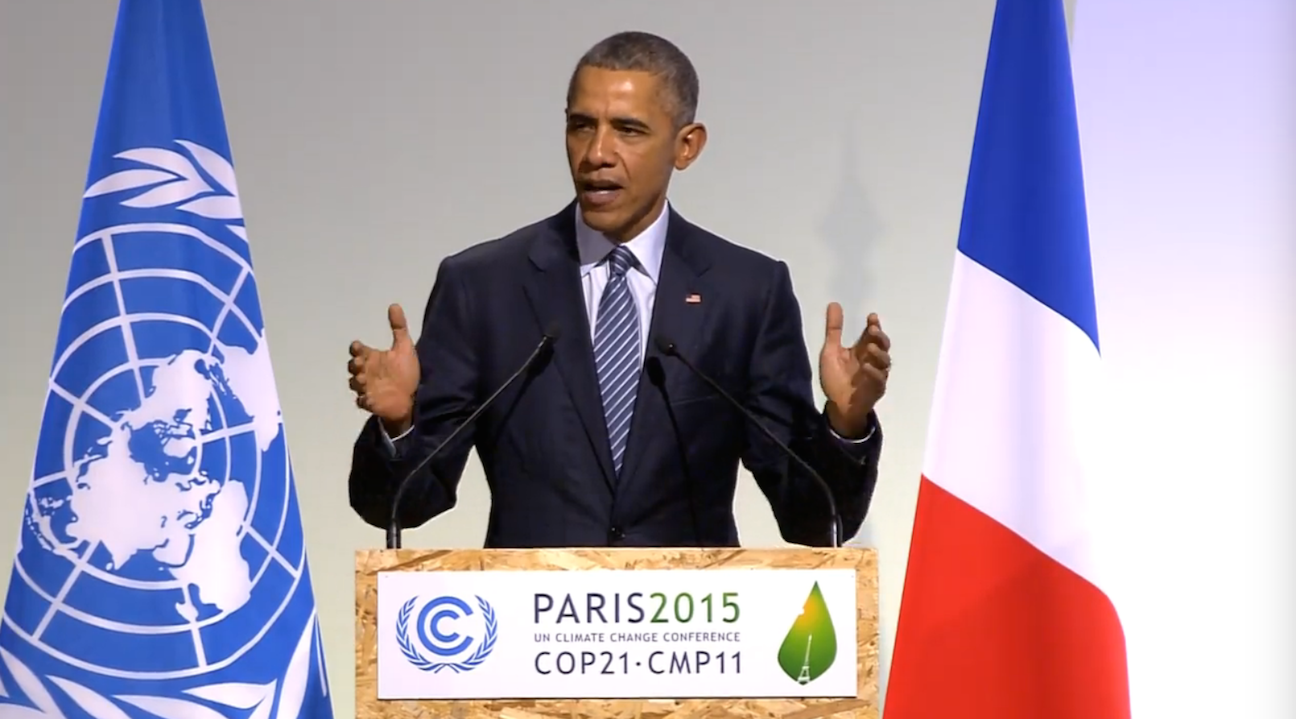Nearly 200 countries are meeting in Paris over the next two weeks to work on a new global agreement addressing climate change. The unprecedented global momentum for government action on climate has been building. Going into the meeting, known as the Conference of the Parties (COP 21), nearly 180 countries, representing 95 percent of global emissions, have already submitted their intended emission reduction targets (INDCs).
On the eve of the negotiations, over 570,000 people marched and rallied at 2,300 events around the world for an ambitious legal agreement to decarbonize our economies and transition to renewable energy, and almost 1.8 million people of faith have signed a petition that was delivered to the United Nations. The Sierra Club's Local to Global campaign has added to the momentum by urging mayors to join a national Compact of Mayors highlighting bold actions. The more than 50 subnational governments that have joined the Under 2 MOU now represent the largest economy in the world.
The agreement in Paris is expected to determine a process for scaling up national climate mitigation actions and financial means of support. But although the pledges and long-term goal options on the negotiating table represent a meaningful signal to investors that the world is decarbonizing our economies, they are not yet enough to stop dangerous climate change.
The United States contribution to the Paris agreement is a good start, with a long way to go. The U.S. INDC calls for a reduction of 26 to 28 percent below 2005 levels by 2030. President Obama’s Clean Power Plan is the cornerstone of national policies that back up this important pledge, in addition to the new incentives and regulations for cleaner cars and fuels. Indeed, President Obama boldly called on heads of state today to “secure an agreement that builds in ambition, where progress paves the way for regularly updated targets,” and for a “commitment that resources will be there for countries willing to do their part to skip the dirty phase of development.”
Without these important contributions to global action, global temperatures would jump an average of 8° F. The Paris agreement will lower the likely increase to just over 6° F. To limit the temperature increase to the 2.7-3.6° F (which global scientists say is necessary in order to avoid catastrophic climate change), countries will need to agree on a process for increasing actions through five-year review cycles.
For a review process to succeed in increasing the ambition of international climate action, countries will need to work together to overcome past obstacle. In particular, countries must make progress on how to differentiate and equitably share responsibilities for addressing greenhouse gas emissions, both through national emission reductions and through financing support for developing countries. A key challenge for negotiators will be how to structure a meaningful assessment well in advance of the next review cycle, in light of the deep decarbonization needed to meet science-based, ecologically sound emission-reduction goals.
The Paris agreement is essential to ensure that every country is doing its part to address climate change. As the U.S. government has stepped up to take greater leadership through major initiatives like the Clean Power Plan, so have other developed and developing nations. Together, these efforts begin a shift to a cleaner economy that protects the climate and the health of future generations.
